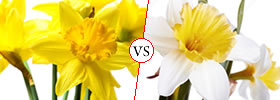Difference between Washington and Washington DC
Key Difference: Washington is a state that lies in the Pacific Northwest region of America. It is located north of the state of Oregon and west of the state of Idaho. Washington DC, on the other hand, is a city, and not any city, it is the capital city of the United States of America. The main difference between the two is the fact that one is a state, while the other is the capital city of the United States of America.
 Often it happens that two places end up with the same or similar names. Some examples of this are York, England; York, Pennsylvania, and New York City in New York State. Similarly, Delaware City is a city in the state of Delaware; Mexico City is the capital of Mexico, while New Mexico is state in the US. This can cause a lot of confusion for people, especially since many people tend to refer to places in an off hand manner without much explanation. Another example is Washington and Washington DC.
Often it happens that two places end up with the same or similar names. Some examples of this are York, England; York, Pennsylvania, and New York City in New York State. Similarly, Delaware City is a city in the state of Delaware; Mexico City is the capital of Mexico, while New Mexico is state in the US. This can cause a lot of confusion for people, especially since many people tend to refer to places in an off hand manner without much explanation. Another example is Washington and Washington DC.
The main difference between the two is the fact that one is a state, while the other is the capital city of the United States of America. Both are named in honor of George Washington, who was the military general of the American Revolutionary Army and one of the forefathers of the United States of America. He continued to help lead America by becoming the First President of the United States of America.
Washington is a state that lies in the Pacific Northwest region of America. It is located north of the state of Oregon and west of the state of Idaho. Washington State shares its northern border with Canada. The state was created out of the western part of the Washington Territory which had been ceded by Britain in 1846 as part of the Oregon Treaty.
Washington was added as the 42nd state of the Union in 1889. Washington is currently the 18th most extensive and the 13th most populous state out of the 50 states of America. The city’s most major city is Seattle, which along with it surrounding areas comprises of 60% of the state’s population. The capital of the state is Olympia.
 Washington DC, on the other hand, is a city, and not any city, it is the capital city of the United States of America. On July 16, 1790, the Residence Act was signed which approved the creation of a capital district located along the Potomac River on the country's East Coast. This was due to the fact that country wanted a capitol that was independent from the direct influence on the states, which would happen if the capitol city resided in a state, which would make is compliant to that state’s regulation.
Washington DC, on the other hand, is a city, and not any city, it is the capital city of the United States of America. On July 16, 1790, the Residence Act was signed which approved the creation of a capital district located along the Potomac River on the country's East Coast. This was due to the fact that country wanted a capitol that was independent from the direct influence on the states, which would happen if the capitol city resided in a state, which would make is compliant to that state’s regulation.
In order to form the capital, the states of Maryland and Virginia each donated land to form the federal district. On this land, the city of “Washington, District of Colombia” was created. Washington, D.C. is hence part of the Washington metropolitan area., which has a population of 5.8 million making it the seventh-largest metropolitan statistical area in the country.
As capitol of the country, Washington DC also acts as the centers of all three branches of the federal government of the United States are in the District, including the Congress, President, and Supreme Court. It also houses the centers for various other national institutions, as well as many international organizations, trade unions, non-profit organizations, lobbying groups, and professional associations. The city also hosts 176 foreign embassies.
Comparison between Washington and Washington DC:
|
|
Washington |
Washington DC |
|
Type |
State |
City |
|
First Created |
Washington Territory was formed in 1853 due to the growing Oregon territory. Washington became the 42nd state in the United States on November 11, 1889. |
The signing of the Residence Act on July 16, 1790, approved the creation of a capital district located along the Potomac River on the country's East Coast. It is officially known as “District of Colombia”. It is not part of any state. |
|
Also known as |
WA, US-WA, Washington State, the Evergreen State |
Washington, D.C., District of Columbia, Washington, the District, D.C. |
|
Capital |
Olympia |
Capital of the United States of America. |
|
Area |
71,362 sq mi (184,827 km2) |
68.3 sq mi (177 km2) |
|
Population |
7,061,530 (2014) |
9,443,180 (2014) |
|
Time zone |
Pacific: UTC −8/−7 |
Eastern: EST (UTC−5) |
|
Region |
Consists of deep temperate rainforests in the west, mountain ranges in the west, central, northeast and far southeast, and a semi-arid basin region in the east, central, and south, given over to intensive agriculture. |
The Potomac River forms the District's border with Virginia and has two major tributaries: the Anacostia River and Rock Creek. Tiber Creek, a natural watercourse that once passed through the National Mall, was fully enclosed underground during the 1870s. |
|
Industry |
Washington is a leading lumber producer. The state is the biggest producer of apples, hops, pears, red raspberries, spearmint oil, and sweet cherries, and ranks high in the production of apricots, asparagus, dry edible peas, grapes, lentils, peppermint oil, and potatoes. Livestock and livestock products make important contributions to total farm revenue and the commercial fishing catch of salmon, halibut, and bottomfish makes a significant contribution to the state's economy. Manufacturing industries in Washington include aircraft and missiles, shipbuilding and other transportation equipment, lumber, food processing, metals and metal products, chemicals, and machinery. |
In 2012, the federal government accounted for about 29% of the jobs in Washington, D.C. The District has growing industries not directly related to government, especially in the areas of education, finance, public policy, and scientific research. Georgetown University, George Washington University, Washington Hospital Center, Children's National Medical Center and Howard University are the top five non-government-related employers in the city. |
|
Economy |
Significant business within the state include the design and manufacture of aircraft (Boeing), automotive (Paccar), computer software development (Microsoft, Bungie, Amazon.com, Nintendo of America, Valve Corporation, ArenaNet), telecom (T-Mobile USA), electronics, biotechnology, aluminum production, lumber and wood products (Weyerhaeuser), mining, beverages (Starbucks, Jones Soda), real estate (John L. Scott), retail (Nordstrom, Eddie Bauer, Car Toys, Costco, R.E.I.), and tourism (Alaska Airlines, Expedia, Inc.). The state has significant amounts of hydroelectric power generation. |
Washington has a growing, diversified economy with an increasing percentage of professional and business service jobs. Many organizations such as law firms, independent contractors (both defense and civilian), non-profit organizations, lobbying firms, trade unions, industry trade groups, and professional associations have their headquarters in or near D.C. to be close to the federal government. Tourism is Washington's second largest industry. The District also hosts nearly 200 foreign embassies and international organizations such as the World Bank, the International Monetary Fund (IMF), the Organization of American States, the Inter-American Development Bank, and the Pan American Health Organization. |
|
Geography |
The north-western most state of the contiguous United States. Washington is bordered by Oregon to the south, and by Idaho from the east. |
The District is bordered by Montgomery County, Maryland, to the northwest; Prince George's County, Maryland, to the east; and Arlington and Alexandria, Virginia, to the south and west. |
|
Climate |
Washington's climate varies greatly from west to east. An oceanic climate (also called "west coast marine climate") predominates in western Washington, and a much drier semi-arid climate prevails east of the Cascade Range. |
Washington is in the humid subtropical climate zone and exhibits four distinct seasons. Spring and fall are warm, while autumn and winter are cool with annual snowfall averaging 15.5 inches (39 cm). |
|
National Parks |
Washington has a variety of National Park Service units. Among these are the Alta Lake State Park, San Juan Islands National Wildlife Refuge, as well as three national parks, the Olympic National Park, North Cascades National Park and Mount Rainier National Park. Additionally, there are 143 state parks and 9 national forests, run by the Washington State Park System and the United States Forest Service. |
The District has 7,464 acres (30.21 km2) of parkland, about 19% of the city's total area. The National Park Service manages most of the 9,122 acres (36.92 km2) of city land owned by the U.S. government. Rock Creek Park is the country's fourth-oldest national park. Other National Park Service properties include the C&O Canal National Historical Park, the National Mall and Memorial Parks, Theodore Roosevelt Island, Columbia Island, Fort Dupont Park, Meridian Hill Park, Kenilworth Park and Aquatic Gardens, and Anacostia Park. |
|
Tourism |
Forests cover 52% of the state's land area, mostly west of the North Cascades. Approximately two-thirds of Washington's forested area is publicly owned, including 64% of federal land. Mammals native to the state include the bat, black bear, bobcat, cougar, coyote, deer, elk, gray wolf, moose, mountain beaver, muskrat, opossum, pocket gopher, raccoon, river otter, skunk, and tree squirrel. Also has a varied range of bird species. This range includes raptors, shorebirds, woodland birds, grassland birds, ducks, and others. There are 400 known freshwater fishes. Hence, hunting and fishing are popular sport, as is hiking trekking, river rafting, camping etc. Winter sports are also popular due to the cold weather in winter and the mountainous terrain. Washington ranks second in the United States in the production of wine, behind only California. By 2006, the state had over 31,000 acres (130 km2) of vineyards, a harvest of 120,000 short tons (109,000 t) of grapes, and exports going to over 40 countries around the world from the 600 wineries located in the state. |
Washington, D.C., is a planned city. In 1791, President Washington commissioned Pierre (Peter) Charles L'Enfant, a French-born architect and city planner, to design the new capital. The White House; the Washington National Cathedral; the Thomas Jefferson Memorial; the United States Capitol; the Lincoln Memorial; and the Vietnam Veterans Memorial are listed as America's Favorite Architecture. Historic buildings are designed primarily in the Queen Anne, Châteauesque, Richardsonian Romanesque, Georgian revival, Beaux-Arts, and a variety of Victorian styles. The National Mall is a large, open park in downtown Washington between the Lincoln Memorial and the United States Capitol. Given its prominence, the mall is often the location of political protests, concerts, festivals, and presidential inaugurations. The Washington Monument and the Jefferson Pier are near the center of the mall, south of the White House. Also on the mall are the National World War II Memorial at the east end of the Lincoln Memorial Reflecting Pool, the Korean War Veterans Memorial, and the Vietnam Veterans Memorial. The Franklin Delano Roosevelt Memorial, George Mason Memorial, Jefferson Memorial, Martin Luther King, Jr. Memorial, and the District of Columbia War Memorial are around the Tidal Basin. The National Archives houses thousands of documents important to American history including the Declaration of Independence, the United States Constitution, and the Bill of Rights. Located in three buildings on Capitol Hill, the Library of Congress is the largest library complex in the world. The most visited museum is the National Museum of Natural History on the National Mall. Other Smithsonian Institution museums and galleries on the mall are: the National Air and Space Museum; the National Museum of African Art; the National Museum of American History; the National Museum of the American Indian; the Sackler and Freer galleries, which both focus on Asian art and culture; the Hirshhorn Museum and Sculpture Garden; the Arts and Industries Building; the S. Dillon Ripley Center; and the Smithsonian Institution Building (also known as "The Castle"), which serves as the institution's headquarters. The John F. Kennedy Center for the Performing Arts is home to the National Symphony Orchestra, the Washington National Opera, and the Washington Ballet. |
Image Courtesy: infoplease.com, archdaily.com









Add new comment